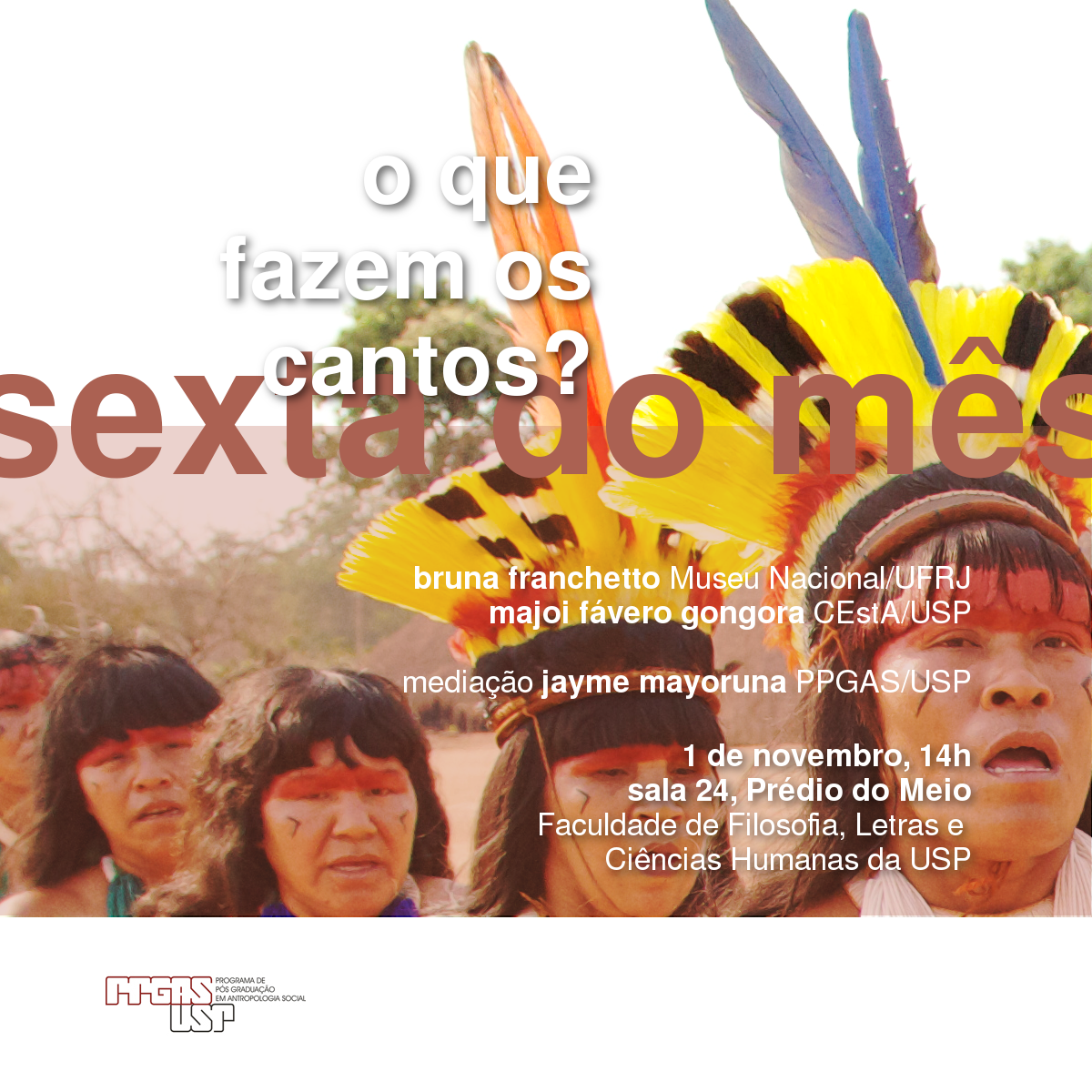With Bruna Franchetto (National Museum / UFRJ) and Majoi Gongora (CEstA / USP)
Mediation: Jaime Mayoruna (PPGAS / USP)
Marching through the streets of big cities, dancing at indigenous village parties or weeping sorrows in a country bar: the word in its sung expression makes the voice a vehicle for communication between worlds. Thinking about the power of transformation and creation of songs in different contexts, the Sixth of the Month invites us to reflect on different aspects of the sung word, its role in the production of people and collectives, its ability to connect visible and invisible spaces and its forms of transmission over time. Interface between music and verbal art, sound and meaning, the songs gain attention from Anthropology through a number of questions: What do the songs of an Amerindian shaman and an immigrant musician do? Who is sung and how are the words and melodies composed by singers composed? How do you learn to sing and how do repertoires circulate between different people and generations? How are chants able to cross and connect spaces and times, transformed or not by the use of registration and diffusion technologies? What is the role of Anthropology to highlight the ways in which different collectives give meaning to verbal arts, musical practices and singing?


